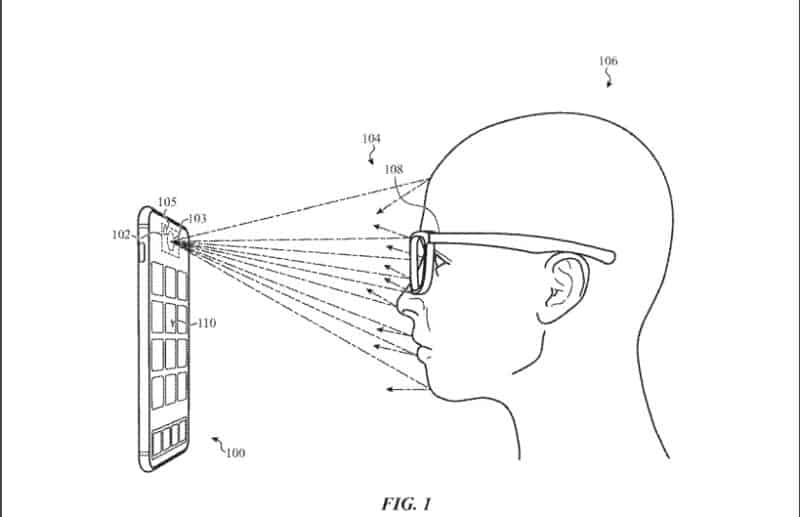
Apple is giving new meaning to the phrase “for your eyes only.” A patent filed by Apple and published Thursday by the US Patent and Trademark Office details the tech giant’s interest in creating “privacy eyewear” that blurs content on a device’s screen unless someone is wearing special glasses to look at it.
As spotted by Patently Apple, the patent, which focuses on creating different FaceID profiles for various visual impairments, explores a new type of privacy screen. The patent doesn’t specify any Apple product by name. Instead, it refers to electronic devices in general, including smartphones, watches, laptops, TVs, and car displays. Drawings in the patent show the feature working on a smartphone-like device.
The technology would use a face scan to determine if the user is wearing the required glasses. It could recognize the headgear by a specific graphic, such as a QR or bar code.
If you’re worried about someone looking at your phone over your shoulder, you could activate the feature “to make the graphical output illegible.” Your privacy eyewear, meanwhile, would “counteract the intentional blur.”
“The blurred graphical output may compensate for the distortion created by the privacy eyewear vision of the user by, for example, blurring a portion and/or the entirety of a standard graphical output; generating an overlay over the standard graphical output; and/or making elements of the standard graphical output larger, brighter, and/or more distinct,” Apple’s patent reads. “In some embodiments, the blurred graphical output may only replace certain graphical elements presented in the standard graphical output. The blurred graphical output may be a default graphical output designed to compensate for the privacy eyewear.”
The patent doesn’t go into detail regarding the actual eyewear used to activate the privacy feature. Rumor has it that Apple’s first mixed-reality headset could debut as early as 2022. As with all patents, there’s no guarantee that we’ll ever see any of this tech in an actual product.